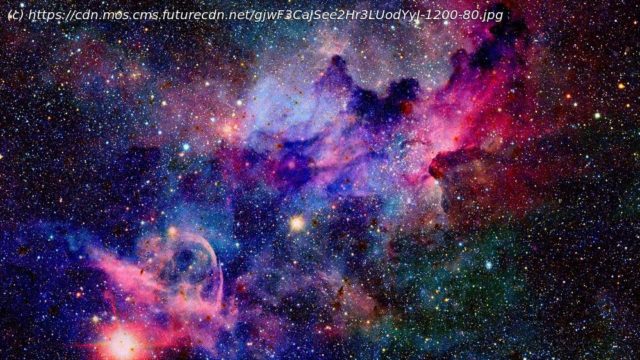Scientists have figured out the average color of the universe by recording visible light from more than 200,000 galaxies.
A colorful shot of nebula and stars in deep space. (Image credit: Shutterstock) When you look up at the night sky, it’s easy to think that the universe is a never-ending sea of blackness. But if you measured the visible light from all of the luminous celestial bodies out there, what would the average color of the universe be? Let’s get this out of the way first: It’s not black. „Black is not a color,“ Ivan Baldry, a professor at the Liverpool John Moores University Astrophysics Research Institute in the U.K., told Live Science. „Black is just the absence of detectable light.“ Instead, color is the result of visible light, which is created throughout the universe by stars and galaxies, he said. Related: How many atoms are in the observable universe? In 2002, Baldry and Karl Glazebrook, a distinguished professor at the Centre for Astrophysics and Supercomputing at the Swinburne University of Technology in Australia, co-led a study published in The Astrophysical Journal that measured the light coming from tens of thousands of galaxies and combined it into a singular spectrum that represented the entire universe. In doing so, the pair and their colleagues were able to work out the average color of the universe. The cosmic spectrum Stars and galaxies emit waves of electromagnetic radiation, which is separated into different groups based on the length of the waves emitted. From shortest to longest wavelength, the groups include gamma-rays, X-rays, ultraviolet light, visible light, infrared radiation, microwaves and radio waves. Visible light makes up a tiny portion of the electromagnetic spectrum in terms of the range of wavelengths, but it is the only part the naked eye can see. What we perceive as colors are actually just different wavelengths of visible light; reds and oranges have longer wavelengths, and blues and purples have shorter wavelengths.






